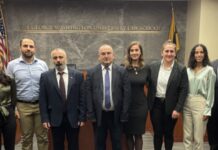By Edmond Y. Azadian
I dedicate this week’s article to Harutune Yessayan, a benefactor in his early 90s who recently contributed $325,000 towards the construction of a hospital in Armenia. Mr. Yessayan confronted me last week in Toronto, Canada, with a copy of my last column in this newspaper and asked me to focus on some positive developments in Armenia. I surmise he wanted to be assured that the contributions from diasporan organizations and individuals are not meant to fill in sinkholes in Armenia but contribute towards a solid foundation for Armenia.
It is a historic fact — and no one with a clear conscience can deny it — that every time Armenia has lost its independence and fallen under foreign domination, internal conflicts have contributed to its eventual collapse.
Yes, indeed, Seljuks were barbarians from the Central Asian plains, who invaded Armenia, but had the Armenians been strong internally, the medieval city of Ani, with its 1,001 churches would not have collapsed and been overrun by those barbaric invaders.
The Mamluks were equally ferocious. They came all the way from Egypt to conquer the Armenian kingdom in Cilicia, taking our last king, Levon VI, as a prisoner. But had our princes at the time used some vision to consolidate the kingdom, rather than fighting with each other, or even worse, colluding with the enemy, most probably Armenians would have kept their state in Cilicia and Mihran Damadian would not have resorted to an ill-fated coup d’état in 1920 and Aram I, Catholicos of the Holy See of Cilicia, would not have to appeal to courts in Turkey or the International Court of Human Rights to claim our legitimate religious center in historic Sis.









